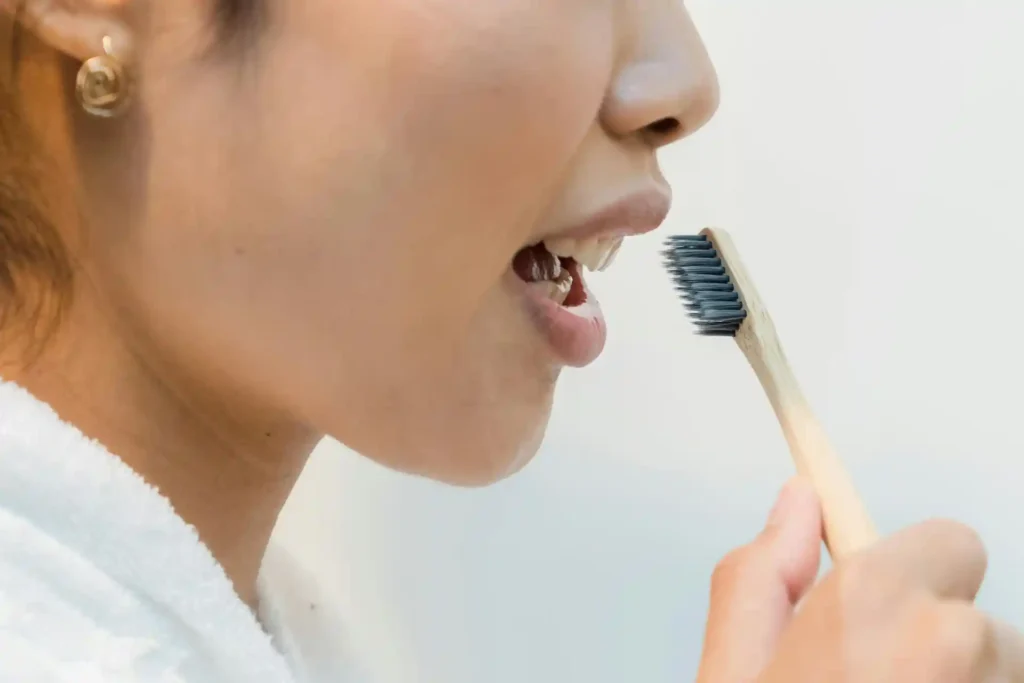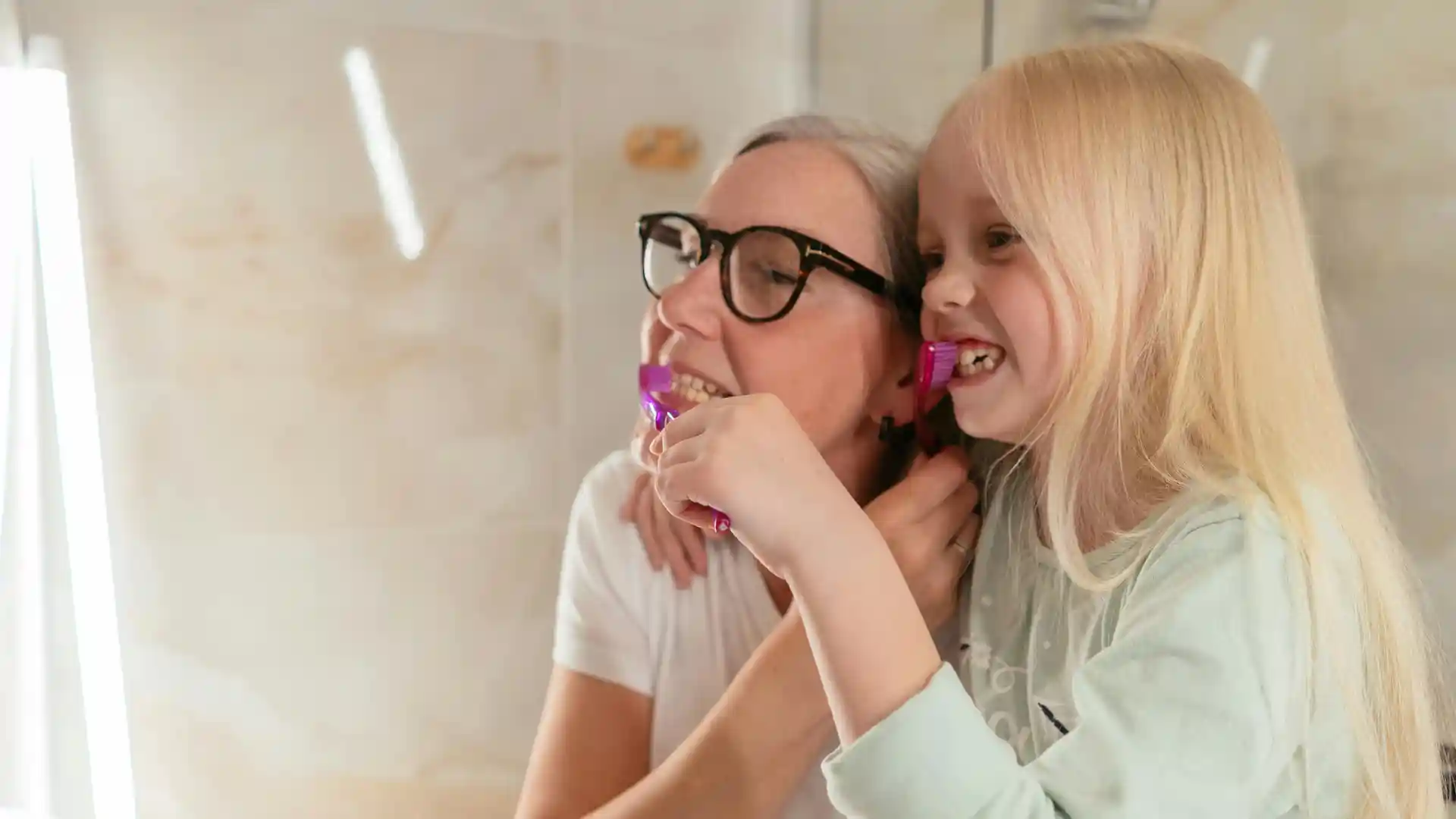If your teeth hurt after brushing, you’re not alone. Tooth sensitivity and discomfort after brushing are common issues that can arise from various causes, ranging from brushing techniques to underlying dental problems. In this article, we’ll explore the possible reasons behind post-brushing pain and offer guidance on how to prevent it. By understanding why your teeth may hurt after brushing, you can make adjustments to your oral care routine and address any underlying dental health issues that might be causing discomfort.
1. Using the Wrong Brushing Technique
One of the most common reasons for tooth pain after brushing is an improper brushing technique. Many people tend to brush too hard or use a back-and-forth scrubbing motion, which can cause damage to both the enamel (the outer layer of your teeth) and the gums. Enamel is essential for protecting your teeth, and when it gets worn down, it can lead to increased sensitivity and discomfort.
Solution:
Use a gentle circular motion when brushing and avoid pressing too hard on your teeth. Aim for a pressure level that effectively cleans the teeth without causing discomfort. Switching to an electric toothbrush with a pressure sensor may also help, as it can alert you when you’re brushing too hard.
2. Using a Hard-Bristled Toothbrush
The type of toothbrush you use also plays a role in how your teeth feel after brushing. Hard-bristled toothbrushes, while effective at removing plaque, can be too abrasive for many people, especially those with sensitive teeth or gums. Bristles that are too stiff can wear away enamel and irritate the gum tissue, leading to pain and sensitivity.
Solution:
Opt for a soft-bristled toothbrush, which is generally gentle enough for most people. Soft bristles effectively remove plaque without causing damage to the enamel or gums. Look for toothbrushes labeled as “soft” or “extra soft,” and consider using sensitive toothpaste if your teeth are particularly prone to discomfort.
Also Read Wellhealth How to Build Muscle tag
3. Tooth Sensitivity and Enamel Erosion
Tooth sensitivity, or dentin hypersensitivity, is a common cause of pain during and after brushing. Sensitivity often occurs when the enamel wears down, exposing the inner layer of the tooth called dentin. Dentin contains tiny tubules that connect to the tooth’s nerves, and when exposed to hot, cold, acidic, or sugary substances, it can trigger pain.
Enamel erosion can result from various factors, including acidic foods and drinks, acid reflux, or chronic teeth grinding (bruxism). Over time, this erosion can cause heightened sensitivity that becomes apparent during brushing.
Solution:
If you suspect enamel erosion is causing your discomfort, try switching to a toothpaste formulated for sensitive teeth. Sensitive toothpastes contain compounds that help block nerve signals in the teeth, reducing pain and discomfort. Avoid acidic foods and beverages, and ask your dentist about ways to prevent enamel erosion.

4. Gum Recession
Gum recession occurs when the gum tissue surrounding the teeth begins to pull back, exposing more of the tooth or even the tooth’s roots. This condition can be caused by several factors, including aggressive brushing, gum disease, or genetics. When the roots of the teeth are exposed, brushing can feel painful because this area is highly sensitive.
Solution:
If you have gum recession, use a soft-bristled toothbrush and be gentle when brushing near the gumline. Avoid overly aggressive brushing techniques, and consider using toothpaste for sensitive teeth. Your dentist may recommend treatments such as gum grafting or special protective coatings to help reduce sensitivity if gum recession is advanced.
5. Brushing Immediately After Eating Acidic Foods
Acidic foods and drinks, like citrus fruits, tomatoes, soda, and wine, can temporarily soften the enamel. If you brush your teeth immediately after consuming these items, you risk damaging the softened enamel, which can lead to sensitivity and discomfort.
Solution:
Wait at least 30 minutes after consuming acidic foods or drinks before brushing. This waiting period allows the saliva in your mouth to naturally neutralize acids and harden the enamel, reducing the risk of damage.
6. Tooth Decay or Cavities
Pain during or after brushing may also signal a cavity or tooth decay. Cavities occur when the enamel is weakened by acids produced by bacteria in plaque. As a cavity progresses, it can expose the inner layers of the tooth, making it more sensitive to brushing and other stimuli.
Solution:
If you suspect a cavity, schedule a visit with your dentist. They can identify and treat cavities before they worsen, using fillings or other restorative treatments to protect your tooth. Maintaining a proper oral hygiene routine and reducing sugar intake can help prevent future cavities.
7. Recent Dental Work or Whitening Treatments
If you’ve recently had dental procedures, such as fillings, crowns, or whitening treatments, your teeth may be more sensitive than usual. This sensitivity is often temporary and should subside within a few days to weeks, depending on the type of treatment.
Solution:
During this period of heightened sensitivity, use a soft-bristled toothbrush and consider switching to toothpaste for sensitive teeth. Avoid extreme temperatures in food and drink, as these can exacerbate discomfort. If sensitivity persists beyond a reasonable period, consult your dentist to ensure there are no underlying issues.
8. Using Toothpaste with Strong Whitening Agents
While whitening toothpastes can be effective in removing surface stains, they often contain strong abrasives or chemicals like hydrogen peroxide, which can cause sensitivity, particularly if used daily or in excessive amounts.
Solution:
If you notice discomfort after using a whitening toothpaste, switch to a milder formula or a toothpaste designed for sensitive teeth. You may also want to limit your use of whitening toothpaste to a few times a week rather than every day to reduce sensitivity.
9. Tooth Grinding or Clenching (Bruxism)
Teeth grinding or clenching, often done unconsciously while sleeping or during stress, can lead to enamel wear and increased sensitivity. If the teeth are already worn down, brushing can exacerbate the pain due to exposure to the dentin or even microfractures in the enamel.
Solution:
If you suspect bruxism, talk to your dentist about wearing a night guard to protect your teeth while you sleep. Managing stress through relaxation techniques can also help reduce clenching and grinding.
10. Underlying Gum Disease
Gum diseases, such as gingivitis or periodontitis, can cause your gums to become swollen, tender, and prone to bleeding, making brushing painful. Gum disease is often caused by plaque buildup and can lead to gum recession, exposing more of the tooth’s sensitive areas.
Solution:
If you experience pain along with swollen or bleeding gums, schedule a dental check-up to assess your gum health. Your dentist can help you establish an effective oral hygiene routine to reduce inflammation, prevent further gum recession, and improve your overall gum health.
Final Thoughts: Preventing Tooth Pain After Brushing
Post-brushing pain can have various causes, ranging from simple issues like technique and product choice to more complex dental health problems. If you consistently experience discomfort, consider consulting a dentist to identify the underlying cause and receive tailored advice. By adopting gentle brushing habits, choosing the right dental products, and staying on top of routine dental check-ups, you can prevent tooth pain and maintain a healthy smile.

